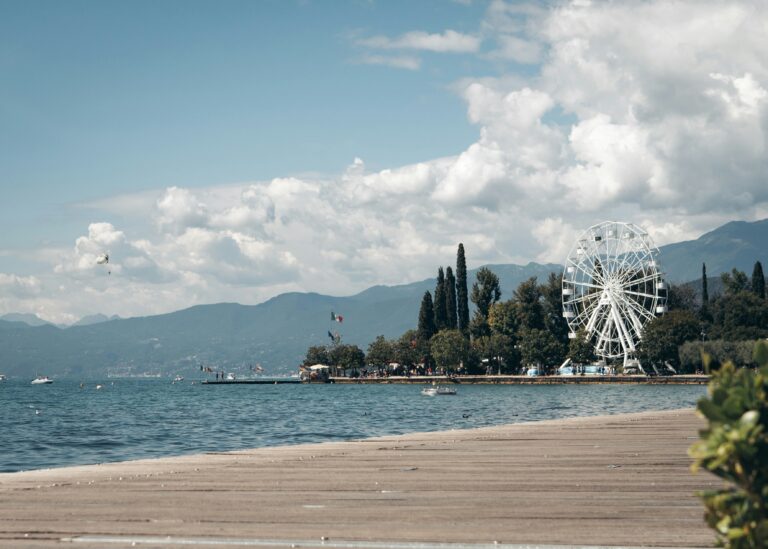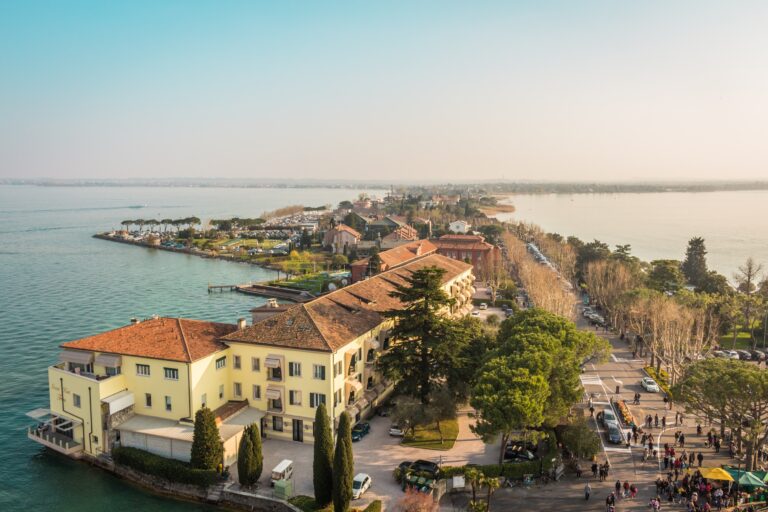
Three things to see in Manerba
Manerba del Garda: guardian of the lake beauty
Certainly, Manerba del Garda is a unique area between lake and hills, rich in history and breathtaking landscapes. In order to offer you a detailed overview, I wrote this article, choosing three things to see in Manerba. Italian and foreign tourists adore this destination, particularly appreciated for its beaches, the Natural Reserve, the Archaeological Museum and the numerous churches.
Being in Italy, you should satisfy the palate as well, and these areas respond by offering excellent quality products. Extra virgin olive oil, wine and some typical dishes, such as the Brescia spit or fish, are among the most popular. In addition, for a real holiday, you cannot miss moments of entertainment. The whole summer is enlivened by cultural events, concerts, festivals, guided tours, and much more.
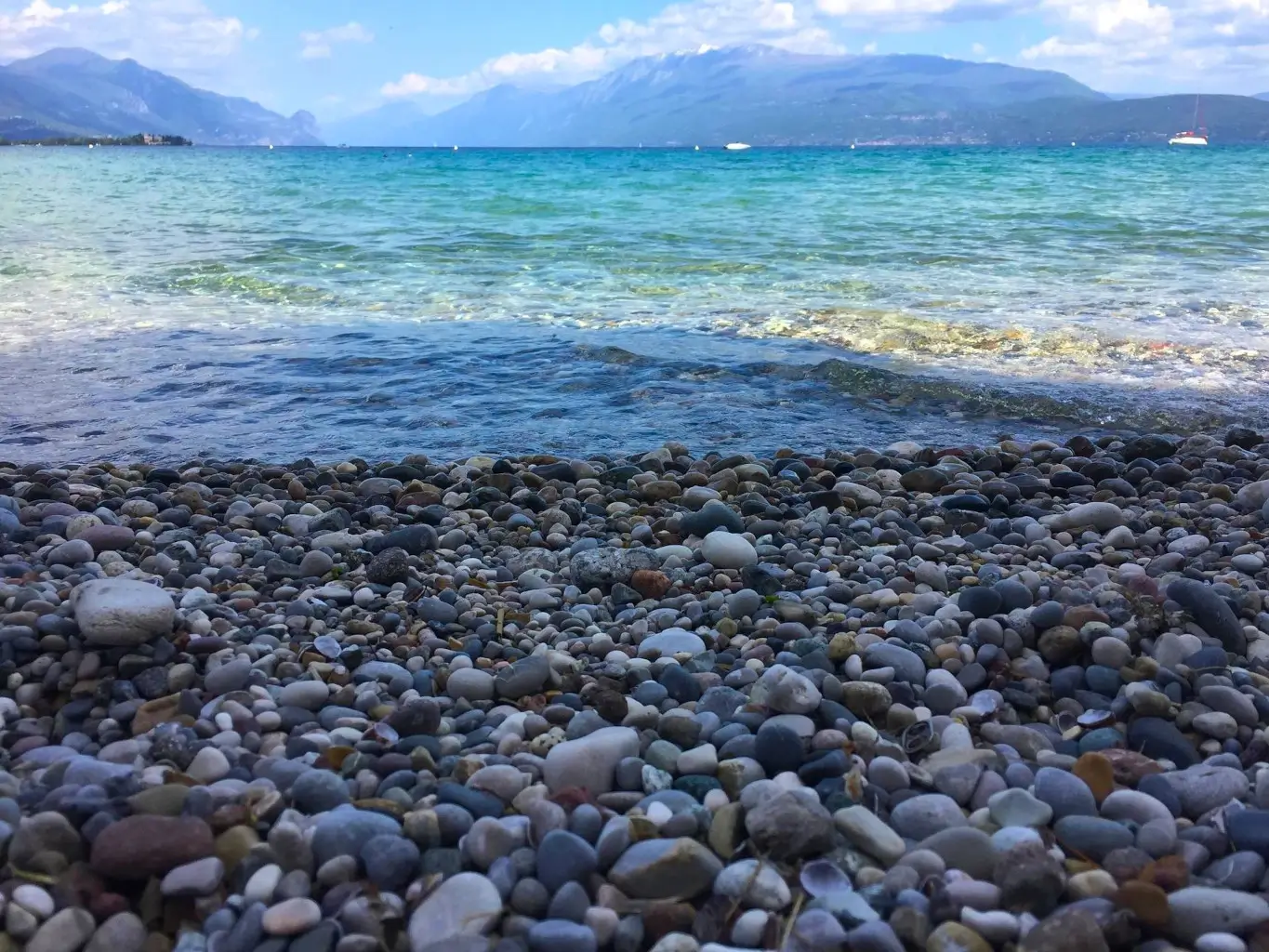
How to get there
First of all, you need to know how to reach Manerba.
- By car you can easily reach the town through the Provincial Road SP572, which connects Desenzano and Salò. To reach the Rocca car park, take via del Melograno (it’s a narrow road, but don’t worry, it’s the right one) and continue for a few minutes. You will arrive at the base of the top, just below the remains of the Medieval Fortress.
- If you can’t – or don’t want to – take the car and have to use public transport, here is the solution. The city can be reached by bus from Brescia station with the LN009 line, or by ferry from the ports of Desenzano, Sirmione and Garda.
Manerba is certainly one of the places to visit on Lake Garda, interesting both from a natural-istic and historical-artistic point of view.
In short, it can satisfy all tastes and I am sure that here you will find something suitable for you too. So, let’s start our journey.
Three things to see in Manerba: your guide to not miss anything
1. La Rocca and the Natural Reserve
2. The churches
3. The islands
Eventi
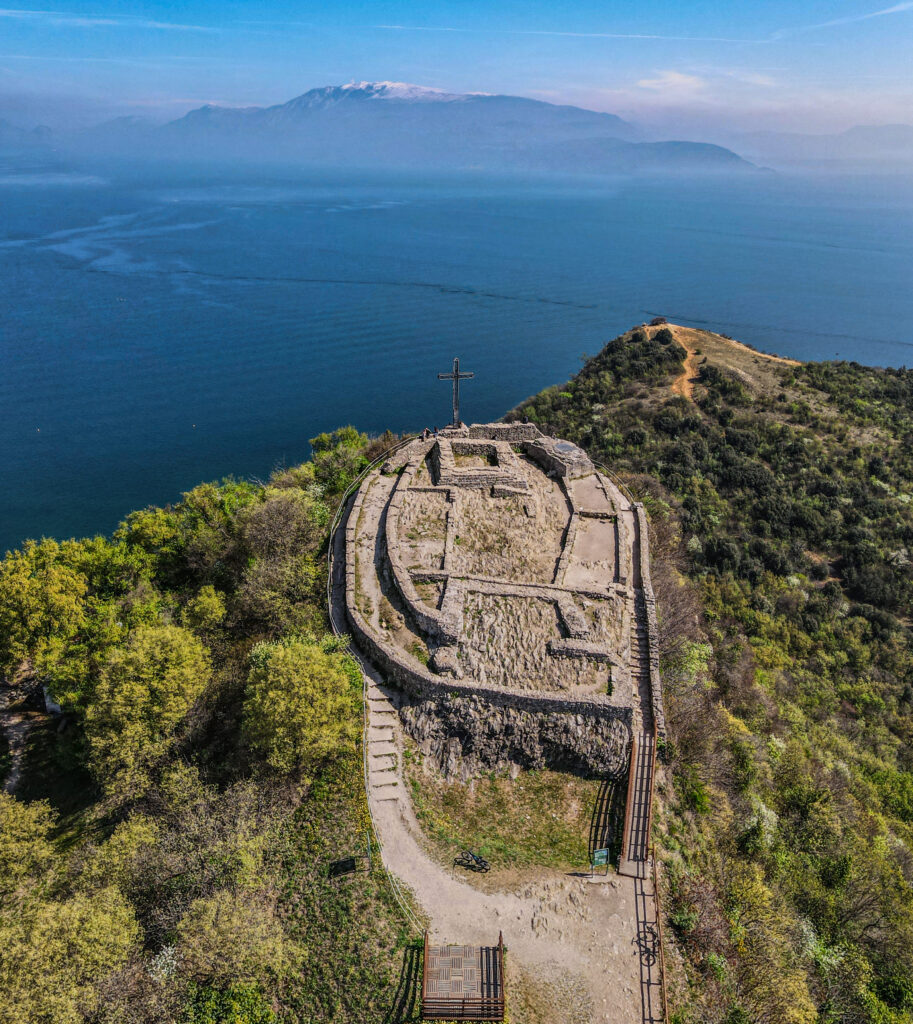
1. La Rocca and the Natural Reserve: a beauty to explore
The element that made Manerba famous is certainly the viewpoint of the Rocca, on the top of Mount Re.
From here you can enjoy one of the most beautiful views of all of Lake Garda. The Island of San Biagio and Isola del Garda on the left and the long peninsula of Sirmione on the right are clearly visible. On clear days you can also observe the upper part of the lake and the summit of Mount Baldo, which is located on the opposite shore.
La Rocca di Manerba is a promontory located on the western shore of Lake Garda, halfway between Desenzano and Salò. It reaches an altitude of 216 meters and overlooks the lake, offering a breathtaking view of the area below. If you are visiting the lake and looking for a viewpoint, this is the right place, but there are many other things you must see.
I visited it for the first time a short time ago, and I regretted not having done it before. In the next few lines, I will try to provide you with a complete guide. It will be on the main three things to see in Manerba del Garda, so that you don’t miss them.
Don’t make my mistake and add this beautiful promontory to the list of your next places to vis-it on Lake Garda!
The panoramic point is located in correspondence with the remains of the castle of medieval origin, which make the fortress an open-air museum. If you have children, this is the place for them too. They will understand that a museum doesn’t have to be a boring place, but it can be something interesting, to be touched and explored.
Excavations began in the 1970s. In reality, the area on the top is only a small part of what was found. The oldest archaeological finds date back to the Mesolithic period (8000-5000 BC) and are located near the current pond. Other evidence of settlements can be seen in the Sopra Sasso area, the plateau located between the fortress and the lake, or along the coast.
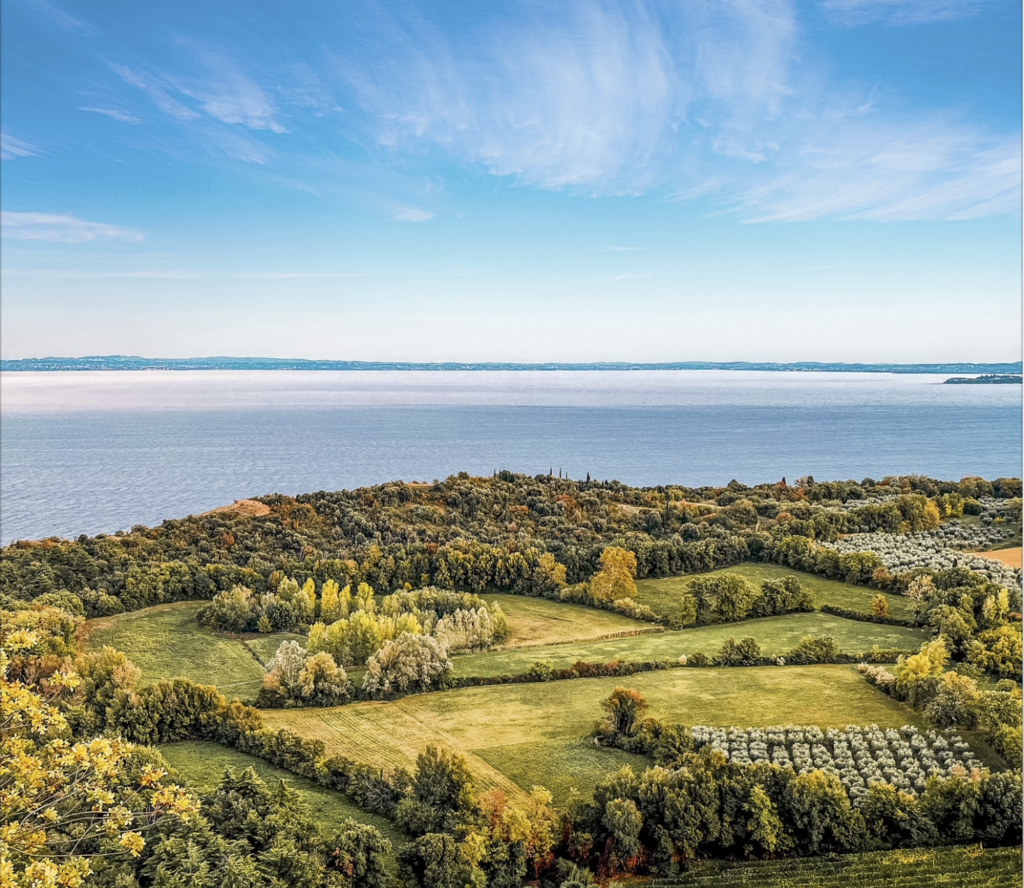
Riserva Naturale della Rocca e del Sasso
This whole area is part of the Rocca and Sasso Nature Reserve. It includes the entire promontory and the coastline between the port of Dusano (south) and the island of San Biagio (north). This place is an explosion of colors, where the blue of the lake meets the green of the spontaneous vegetation. In the southern area you can also observe the many olive trees, typical of the lake.
If you want more detailed information, you can find the Museum between the parking and the top, organized on two floors. On the ground floor there is an archaeological exhibition with finds from the surrounding areas, while the upper floor is dedicated to the naturalistic aspect.
To oxygenate your lungs and see the surrounding nature more closely, you can explore the trails distributed on the promontory. My suggestion is to go to the Sasso, the tip just overhanging the lake and continue on the cliff. The blue of the water below, the sound of the waves crashing on the cliff, the seagulls flying in the sky, what else could you look for?
If that is not enough, you can go back and relax in the green of the local flora. Otherwise, you can go to the beaches for a bit of relaxation in the cool waters of the lake.
To the south there are also prehistoric pile-dwelling sites. Found in the waters of the lake at the San Sivino-Gabbiano locality, they are now part of the UNESCO heritage.
We have thoroughly investigated the first point, there are two others left and I assure you that they are equally unmissable. Read on to find out more about this place to visit on Lake Garda!
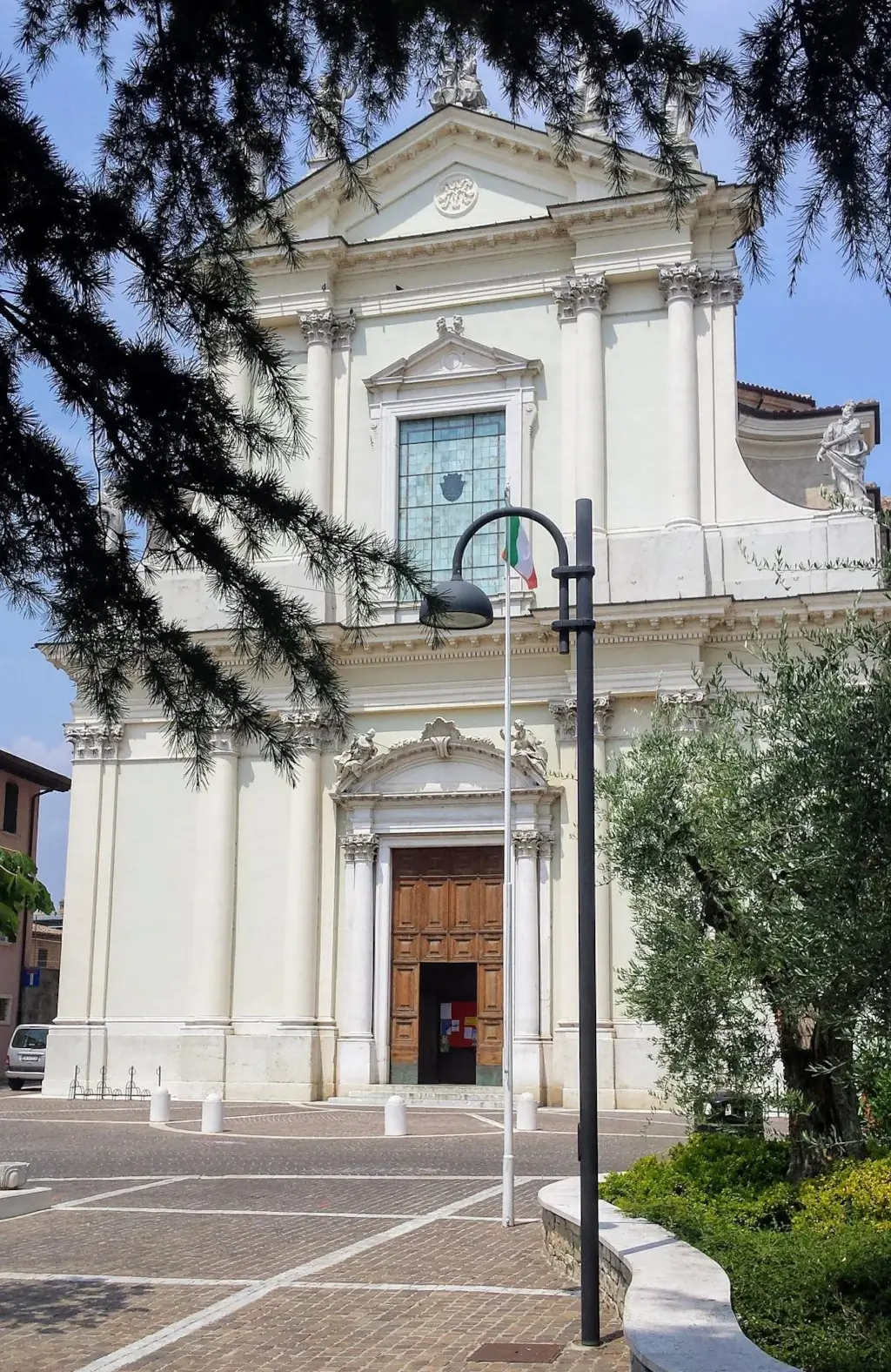
2. The churches of the historic center
The second of the three things to see in Manerba is its historic center, which you can reach in 20-25 minutes on foot from the Rocca. Its narrow streets intertwine between the stone walls of the oldest houses. The center can be visited on foot in an hour and gives you many views to capture. So, don’t forget to bring your camera with you.
During your visit, Manerba churches, of great artistic and architectural value, deserve special attention.
Church of Santa Maria Assunta
The most important is certainly the cathedral, or the Church of Santa Maria Assunta. It is located in the fraction-capital of Solarolo and belongs to the diocese of Verona. It was built in the 18th century and consecrated in 1781. Some restoration work has brought it to its former glory and now you can admire it in all its beauty.
From the outside it may seem modest, but as soon as you pass the door you will be surprised by the majesty of this place. The richly decorated barrel vault in the Baroque style surmount the marble columns and Corinthian-style capitals. The frescoes on the ceilings of the aisles represent biblical scenes, while above the presbytery there are allegories of the cardinal virtues. Looking up could give you a stiff neck, but trust me, such beauty worth it.
The merit of these works goes to Antonio Spazzi, an artist from Brescia. He also created some sculptures found in Mantua, in Palazzo Te, so you may have already seen some of his works. Before leaving, pay attention to the altars located in the side chapels. Dedicated to the Madonna and the Saints, they were painted by Giovanni Verenini, another brescian artist (from Salò) who took care of all the interior decorations.
The Manerba cathedral is certainly one of the places to visit on Lake Garda, but there are two other churches I would like to tell you about.
Church of the Holy Trinity
If you are on foot, just after the Church of Santa Maria Assunta you can visit the Renaissance Church of the Holy Trinity. Features that distinguish it are the semi-elliptical arches and the frescoes.
Church of Santa Maria in Valtenesi
If you have the opportunity to go a little further, I recommend the Church of Santa Maria in Valtenesi. It’s a 20-minute walk from the first church I told you about, but it’s also very close to the beach. So, if you’re planning on going for a swim, consider a quick visit, you won’t regret it!
It has a very different charm than the church of Santa Maria Assunta. It is much less impressive, but more intimate. Thanks to its Romanesque style it is able to arouse the reverence typical of the oldest buildings, without the need of excess decorations. It is estimated that it was even built between the 6th and 7th centuries.
The remains of the frescoes that you can see inside date back to the 12th century. In fact, between this period and the sixteenth century, the walls got embellish and the building expanded with the addition of the side aisles.
Upon entering you will see the three naves, illuminated by small windows located on the facade. The vault is a barrel vault lowered in the central area and a cross vault is in the lateral ones. On the flanks there are instead five lateral semi-chapels.
Still not convinced that Manerba is one of the unmissable places to visit on Lake Garda? Read the next lines and I’m sure you’ll change your mind.
3. Freshwater paradises: the islands
North of the Rocca there are the two islands that I mentioned at the beginning: Island of San Biagio and Isola del Garda. Clearly visible from the top of the fortress, but a little more difficult to reach if you don’t have the right directions. I included them in the list of the three things to see in Manerba because they are a must if you are in the area. Don’t worry, I’ll explain how to get there easily.
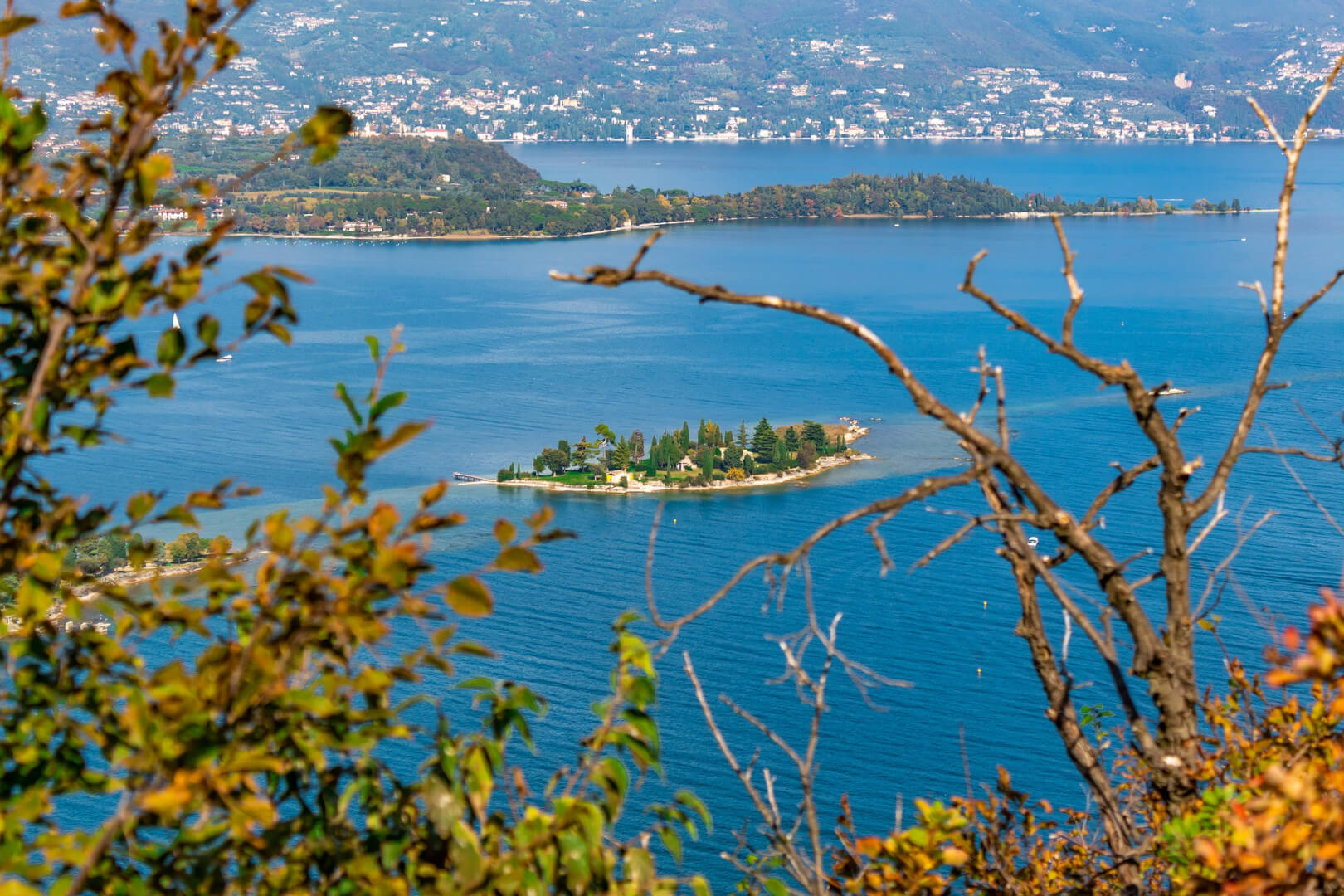
San Biagio Island
The closest to the Rocca di Manerba is the island of San Biagio, often called the Island of rabbits. The name derives from the animals that have occupied the island for a long time, but which unfortunately live no longer there.
To reach it there are two options, depending on how high the lake waters are and obviously what you prefer to do. If the tide is low and getting a little wet is not a problem, you can reach Punta Belvedere and continue on foot for about 150 meters. The water reaches approximately to the knees and is an excellent excuse to cool off a bit if it is a too hot day. Please, be careful not to leave your mobile phone in your pocket!
Alternatively, you can take a comfortable boat trip, which costs € 5 in total for a round trip from Porto Torchio.
The San Biagio Campsite owns the island, so admission is free for its guests, while it has a cost for external visitors. Last very useful information: the island is open from 9 am to 6 pm. As you have seen, it is not difficult to reach the island. Moreover, upon your arrival you will find a beautiful green area for a little relaxation and crystal-clear water.
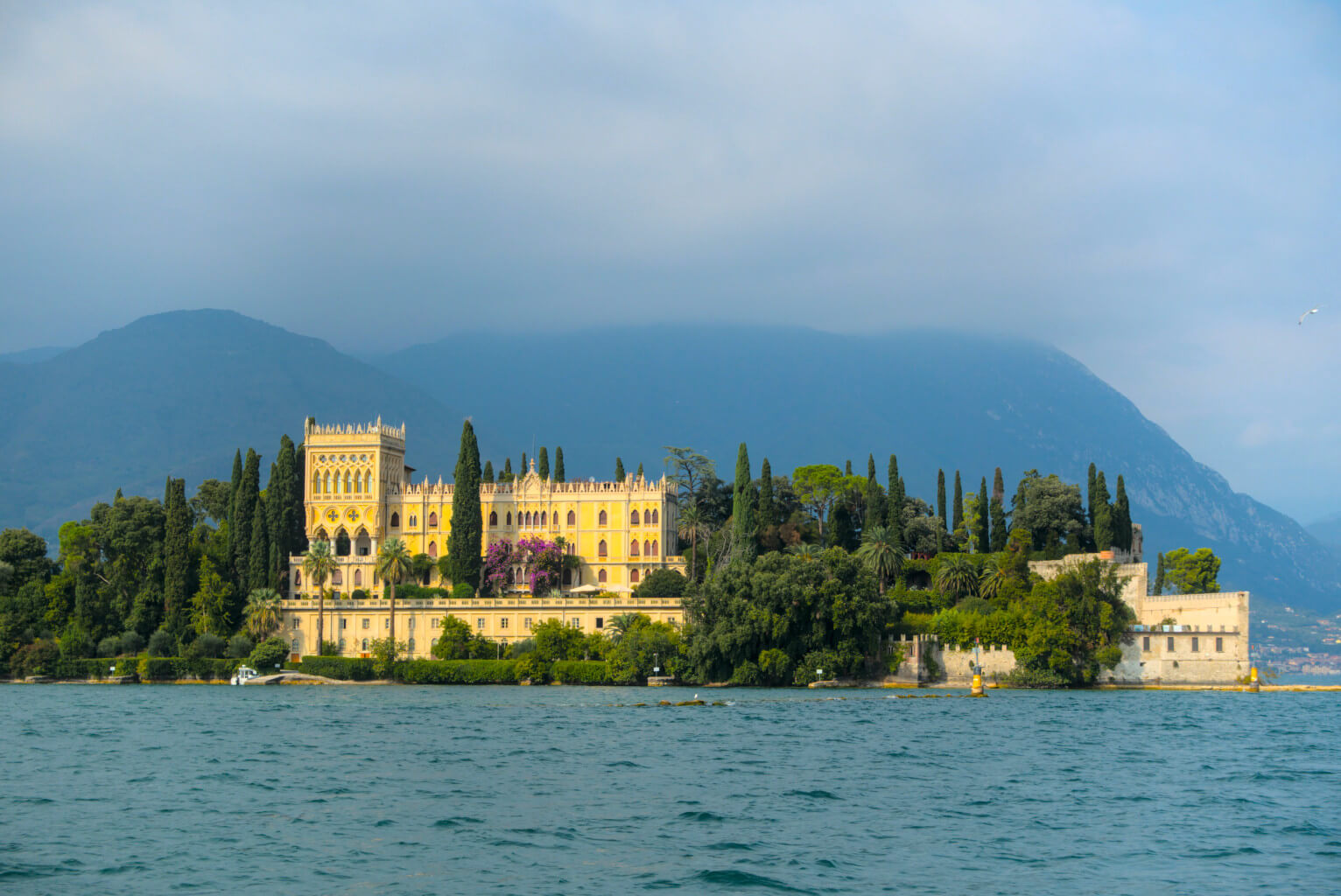
Isola del Garda
The second island not to be missed is Isola del Garda. This is also private, but there are many guided tours including boat transfers, which depart from various points on the lake. From Manerba the closest ports are Torchio and San Felice del Benaco, but there are also departures from other cities.
On the island you can visit the villa, built in the nineteenth century in Venetian neo-Gothic style, and the entire green area. Near the building there are beautiful Italian and English gardens, while just a little further away you can immerse yourself in the centuries-old park. Several plant species grow here, including Canarian palms and various fruit trees. Everything is surrounded by the waters of the lake, which make everything even more picturesque.
After pointing out the three things to see in Manerba, I hope I convinced you to visit this un-derestimated corner of nature and art.
If not, here are the latest tips to better plan your stay in this place to visit on Lake Garda.
When to visit Manerba
You can visit Manerba at any time of the year, even based on what interests you most. If you want to go to the “island of rabbits” or simply enjoy the beaches, I recommend going from June–July to September. August is also perfect but consider that there will be more people and a lot more traffic.
If, on the other hand, you want to take a walk on the top of the promontory you can also go in spring. It will be cooler, and you will be able to admire the blooms and the panorama with more tranquility. Keep in mind that the lake is quite windy. So, if you are planning to stay until after dark, I recommend that you take a light sweater.
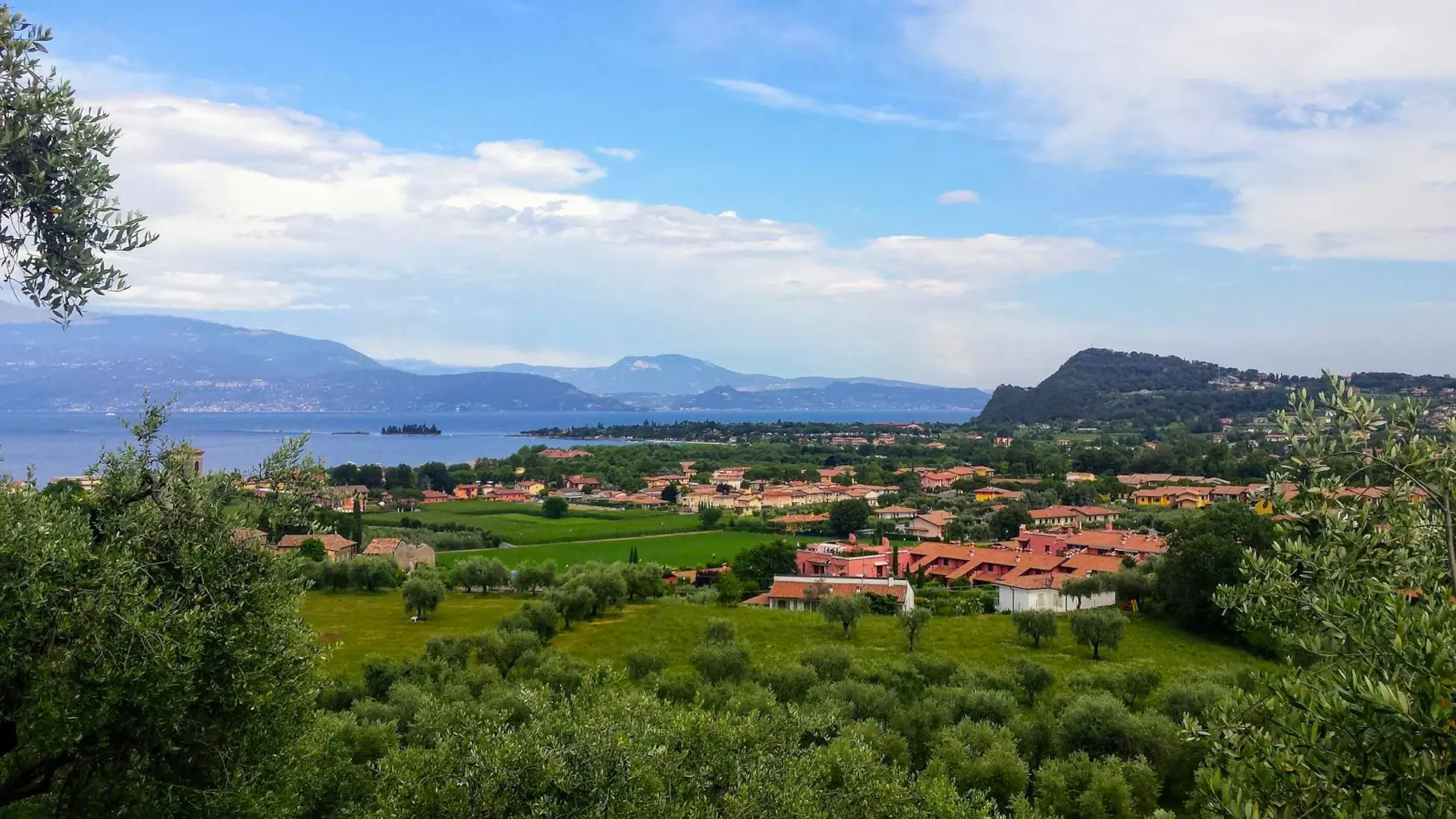
Recurring events
Throughout the year, you can participate in all kinds of events.
- In winter, during the Christmas holidays, the mechanical nativity scene attracts many visitors, both local and non-local;
- But as we know, summer is the richest period of activity. I recommend a tour on the tourist train, active from July to September, to better visit the city and certainly a bit of “Shopping under the stars“. The latter takes place every Tuesday summer evening from 6.30 pm to midnight.
- For sports lovers there is only the spoiled of choice. You can choose between the Sports Festival in July and the Volunteer Festival in August, both with food and wine stands and lots of music.
- Furthermore, periodically free guided excursions are held both by mountain bike and by kayak and trips in collaboration with the CAI of Desenzano. If you want to combine a little history with your excursion, there are initiatives to satisfy this desire too. You can participate in historical archaeological guided tours in the Museum and in the Park of the Rocca with tasting of local products.
- Finally, let’s not forget the culture. From July to August there is the open-air cinema at the oratory courtyard in Piazza Moro, as well as many theatrical initiatives, especially in dialect!



